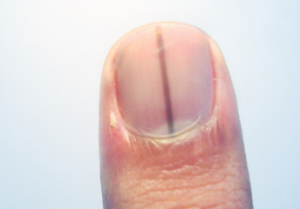
Supposedly for neurotypicals, eye contact is crucial in social settings.
But if this is so, how do blind people navigate social interaction?
Once I began strongly suspecting that I was autistic, I became deeply fascinated by eye contact.
But blind people don’t rely upon eye contact – yet do quite well in social interaction.
Is eye contact overrated by neurotypicals?
Let’s take a closer look at this intriguing question – which can even be applied to having conversations with people in the bright sun – everyone wearing sunglasses and hence, nobody can see anyone’s eyes.
Yet eyes hidden by shades never seemed to stunt the socializing process!
Eye Contact: So Vital to the Human Species
We’re often told that eye contact is one of the most important parts of human communication.
From job interviews to first dates, we’re told to “look people in the eye.”
But if eye contact is so essential, how do blind individuals manage to build relationships, and navigate social or business conversations?
The short answer: They’ve got plenty of other tools that work just as well, if not better.
However, what about the neurotypicals interacting with them? Wouldn’t they still need or want eye contact?
We’ll get to that shortly. Let’s first look at the blind person’s tools.
Nonvisual Cues
Blind people rely heavily on nonvisual cues — like tone or inflection of voice, pauses and listening to changes in breathing — to interpret what someone else means.
These subtle signals can reveal just as much as a gaze can.
For example, a 2019 study in Frontiers in Psychology (Schmid et al) found that blind individuals often develop heightened sensitivity to vocal patterns and emotional tone.
While sighted people might notice a raised eyebrow or “intense eyes,” blind people will pick up the same emotional cue through the rhythm, warmth or tension in someone’s voice.
Interestingly, social scientists have found that people who can’t see don’t necessarily experience awkwardness or miscommunication more often than do sighted people or in a way that autistic people experience.
A 2021 study in Journal of Visual Impairment & Blindness, by Johnson et al., showed that blind participants often reported feeling just as socially connected as their sighted peers.
The key difference was how they formed those connections.
Instead of relying on visual feedback such as eye contact or facial expressions, they tuned into vocal nuances and verbal timing — the musicality of conversation, you might say.
In group settings, blind people might use orientation cues to track who’s talking.
Sound reflections, footsteps or even the direction a voice comes from help them anchor themselves in social space.
Some develop a kind of “audio mapping,” an intuitive awareness of who’s where based on sound.
A 2017 paper in Cognitive Processing (Hickok et al) found that blind participants were significantly better than were sighted ones at distinguishing multiple overlapping voices — basically, their brains were more efficient at sorting complex audio input.
What about sighted people “reading” the eyes of blind people?
So in conversation, that neurotypical who can see will likely be looking at the eyes of a blind individual – knowing full well that this individual can’t see back. They may even be looking if the blind person has on dark sunglasses obscuring their eyes.
Humans seem to be quite hardwired to zoom in on eyes when interacting.
The neurotypical (and even some Autistics) will instinctively or out of habit look to those unseeing, unregistering eyes.
And that’s really strange. Is this driven mostly by instinct or societal norms or what?
I once had a conversation with a blind woman – who was also autistic.
As we chatted while seated at a table, she was facing forward – head, eyes and all – while I was at her side, facing her, ear angled towards her head and listening intently to her very soft speech which was difficult to decipher.
But occasionally while she was talking I’d briefly look at her eyes – I’m not sure why, probably out of habit. I had no problem with her lack of eye contact.
And when I was talking I hardly looked at her eyes.
Now what about neurotypical sighted people, who depend so much more on prolonged eye contact?
For them, talking with someone who’s blind can feel a little awkward at first — mainly because they’re used to relying on eye contact for feedback and emotional connection.
Meeting one’s gaze helps sighted people know when it’s their turn to talk, whether the other person is engaged or if they’ve said something confusing.
When that cue disappears, they often feel unsure how to “read” the interaction.
Research shows that people who can see may initially experience mild discomfort or uncertainty in these conversations.
A 2020 study in Disability and Rehabilitation (Foster et al) found that sighted participants tended to overthink their behavior, sometimes becoming overly formal or cautious when interacting with blind people.
Aren’t we all familiar with the phenomenon of sighted people speaking loudly and slowly when they learn someone’s blind?
Or perhaps they make attempts to avoid interaction altogether because they can’t imagine a conversation without heavy eye contact.
But the study found that even with brief experience in conversing with a blind person, that discomfort typically fades in the sighted individual.
Adaptation by the Sighted Person
A paper in Frontiers in Human Neuroscience (2018, McGann et al) explains that the social brain quickly adapts to new communication patterns when vision based cues are unavailable.
The study did not distinguish between sighted neurotypicals and sighted Autistics, but we can infer that an autistic individual would still quickly adapt – and in fact, may adapt must faster than most NTs since many Autistics already make a habit of relying more on verbal or auditory cues rather than eye contact.
Essentially, sighted people learn to “listen with their eyes closed,” focusing on warmth and timing in conversation rather than eye contact itself.
Plus, when a blind listener says things like “I see,” “right” or “mm-hmm,” the sighted speaker (whether NT or autistic) will sense the listener’s engagement and attentiveness.


























